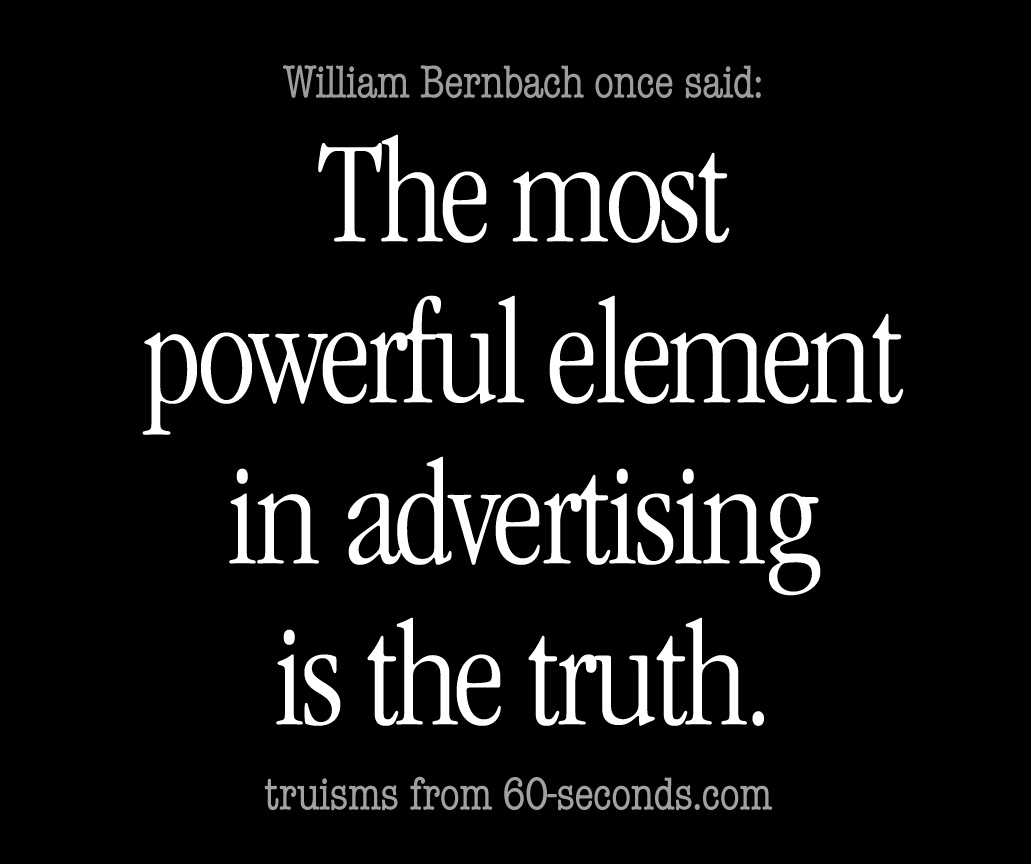So you think you’re getting rich with web affiliate schemes, and Google? You’re giving away your web space in exchange for a percentage of a sale? From where I’m standing it looks like a huge rip-off to the benefit of the advertiser. If you’re paying attention to what’s happening, you might think different.
![]() Do you sell ads on your web site? As you know, web advertising is everywhere and everyone has become immune to it. We almost never hear any complaints about ads on web sites these days. But if you sit back and watch what’s happening, you might think different. Do you think you’re getting rich by selling web ads?
Do you sell ads on your web site? As you know, web advertising is everywhere and everyone has become immune to it. We almost never hear any complaints about ads on web sites these days. But if you sit back and watch what’s happening, you might think different. Do you think you’re getting rich by selling web ads?
Once upon a time, the advertising industry wanted so badly to get rich on the Internet they would do anything to make a dime. Since business and industry were really skeptical about buying ads online, the advertising industry became prostitutes in order to lure advertisers. They got desperate. Some idiot said, “You don’t have to pay anything unless someone actually clicks and buys something!” When met with more resistance, complete idiots said “… and you don’t even have to pay a lot, just pennies!” Of course the advertiser loved that. The web became a consignment flea market. That spelled the end of the publisher’s advertising market.
Our story should begin with Amazon.com and Google.com, but that’s such old news there’s no need to point out how they’re ripping you off. But I get email almost every day that reads something like this:
> My name is Walter and I am the Manager of Premium publishers > at ClickInfolinks, the 3rd largest marketplace of sites in > the world, with more than 120,000 publishers live. > I am currently looking for high quality traffic and I think > that your website content is a perfect match for > our premium campaigns.
So ClickInfolinks thought it would be a good deal for me to give them ad space and links on every page in the design center to advertise their clients. If someone clicks and buys, I will get a percentage of the profits from what they sell.
So then shutterstock.com writes.
> We'd like to offer your users a 7-day free trial > of Bigstock, where users can download up to 35 free images. > Here are some opportunities for us to partner with each other: > * Sponsored post- describe relevance of stock photos > for design projects > * "Big bar"- this pop-up offers the free trial as users > interact on your site. > * Incorporate native ad unit at the end of articles with > a message to "get more graphics on Bigstock.com" and > present the free trial > * Offer free trial on newsletter signup confirmation page
That’s a lot of web site real estate. But the term “partner” usually means I get something in return, right? So, I pressed forward: “How much do I get?”
Well, she explained their revenue sharing model. When someone clicks the ad, goes to their site, signs up for a membership, and then makes a successful purchase, I get 13%. I get nothing if they just shop, or if they sign up for the free trial. (The trial is downloading up to 35 free images in 10 days.)
Perhaps there are people getting rich on her program! From where I stand, however, it looks more like they are getting all the views, all the exposure, and a bunch of traffic without paying a dime. Maybe other web sites really enjoy making money this way.
Not too long ago there was a wonderful product I believed would really sell to my readers. So I entered into a similar agreement. I filled out all the forms, deployed the buttons, set up the accounts, shared my bank account and waited. I wrote articles demonstrating the product and pitching how much I loved it. I posted buttons, banners and newsletter blurbs. Blah, blah, blah. After 6 months I had sold NOTHING and I made NOTHING. That didn’t seem right, so I decided to run a careful check of logs.
In a single month the logs said the button was loaded 180,000 times. It was at the top right and was seen each time someone came to 50% of the pages in the site. The logs said the button, and the bar on the “samples” page was clicked 36,000 times. I could not believe that out of 36-thousand clicks there was not one single purchase. If you toss coin 36-thousand times, will it land on its edge at least once? I presented the data to the product site. They claimed there must be some mistake — their logs only registered 150 visitors, and none of them purchased anything. Does that seem right to you?
There have been others. First there was ClickBank, selling fonts, templates, clip art, stock photos and so forth. Stuff my readers should be purchasing on a regular basis. I gave their advertisers 280,000 views in a month and got paid $66. I dropped them. So many other sites these days are using BuySellAds.com, so I gave SIX of their advertisers 192,000 views. I got paid nothing.
Amazon is almost that bad. When they put the “Buy Used” button next to the “Buy” button sales went next to zero. Who buys books these days? Who pays retail? But at least I get free books to review, and easy, interesting content and pictures to publish. So I’m getting something in return for my ad space.
Google is the worst of them all. Once upon a time Google was fair, tens of thousands of small web sites jumped on the Google revenue bandwagon. They actually paid very well too. Then all the rules kept changing, commissions changed, and nobody could keep up. Then Google went public — then Panda, Penguin and a host of other programs and reasons to demote your traffic and throttle back your revenue. Google advertising became a career. Web owners’ revenue dropped to near zero and Google’s profits soared to the delight of their shareholders. Nobody but me noticed the corralation between the drop in AdSense commissions and doubling Google profits.
Of all these scenarios nobody is getting rich except the advertiser. There are hundreds of thousands of web sites out there who cannot even cover the cost of the site while the are spreading views and exposure resulting in millions.
When I suggest the traditional flat rate model for ad space, they start back peddling. They know they’re model is a huge-off. They know that they cannot actually pay for the space. They start blabbering and asking for Google analytics stats and all that. By prostituting themselves, the ad industry changed from the “pay for what you get” model to “you don’t have to pay” model
Since when do you get ad space in the New York Times, USA Today or the Washington Post and pay nothing unless you sold a product directly from that. Since when could you buy a billboard and pay only a fraction of each sale the board generates? Since when was there a Super Bowl advertiser who paid nothing, up front, and then had to pay only 2% of the product sales from that one ad? The last time I looked, the advertiser pays 3-million up front for a 15 second spot during the Super Bowl. Web advertising model is insane, but everyone but me seems to bend over for it.
Advertising is buying space so an audience will see your ad. Advertising is NOT getting free space to be seen by an audience and if you happen to sell something you pay a tiny fee. They shouldn’t even call it advertising — that’s called consignment.
If you’re involved in any of the click advertising, take a look at your view and click logs — how many times was that page seen or that graphic clicked. Now, look at the time you spend with all the forms, the configurations, the rating sites, the SEO, analytics, social networking, blogging and posting and everything else it takes to get someone to click that button and buy that product. Now compare to the number of dollars you put in your pocket. Does it look like a good business model to you?
Is the space you’re giving those advertisers worth what you’re making? Are you covering the costs of running the web site, your time, and a profit margin from those ads? Is it paying for that second home and yacht in the islands?
If you are sure you want to keep giving away space, let me know so I can buy some of that ad space on your site, track the clicks and sales and pay you a 20% commission on each successful sale. Okay?

By the way, if you do decide to solicit me, we support only American design firms.
Don’t forget … we encourage you to share your discoveries with other readers. Just send and email, contribute your own article, or follow DTG on Facebook!
The original copy of this post is located at https://graphic-design.com/wp-content/uploads/graphic-design.com/60-seconds/326_fools_gold.html
